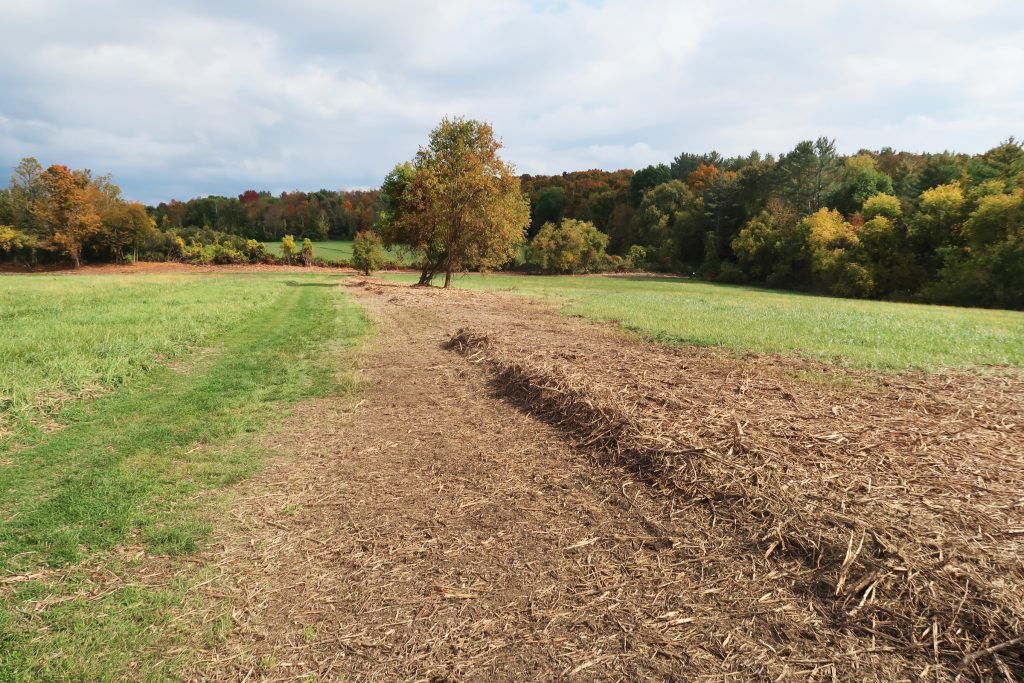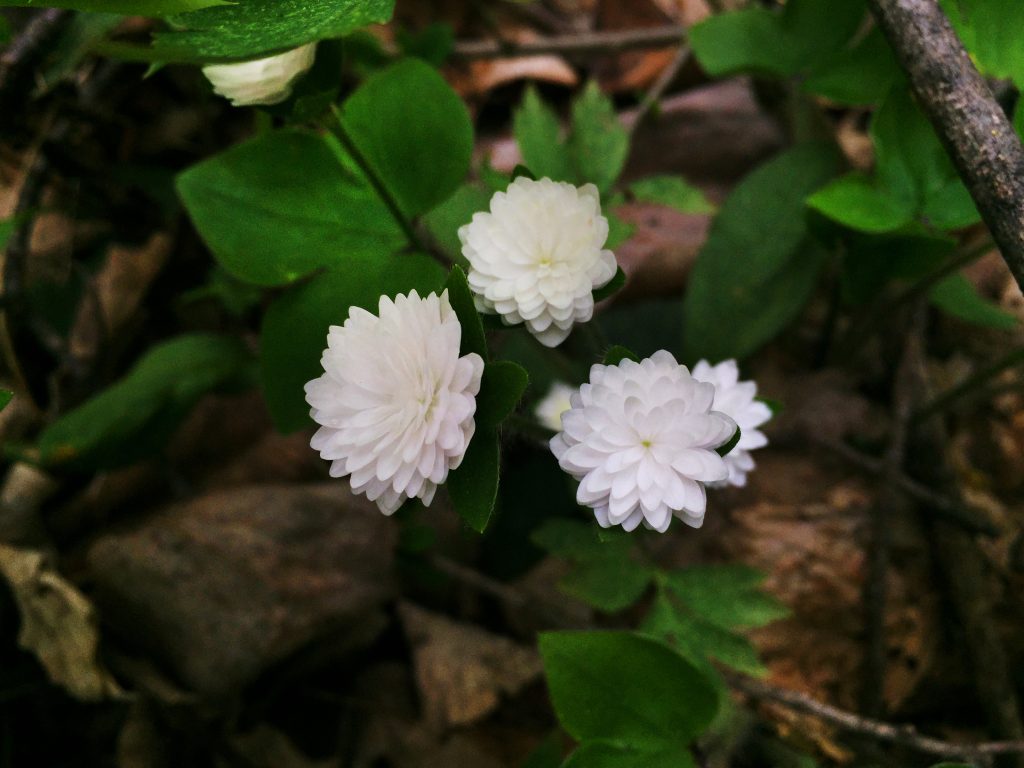The Fund for North Bennington launched its ecosystem resilience project by adopting new management plans for The Mile-Around Woods and for its forested land east of Lake Paran. The plans aim to create a breathing space for a healthy habitat’s key species by helping insects, native plants and animals to hold their ground in the face of a tidal wave of invasives, extreme weather and climate change.
This page provides a summary of The Fund’s work to date to support sustainable fields and woodlands, and to educate the public about ecosystem resilience.
2021. 10-year plans approved. Consultations with multiple conservation experts (ecologists, The Nature Conservancy, Natural Resource Conservation Service, Vermont Center for Ecostudies, the Vermont Land Trust, regional Conservation Districts et al.) helped guide the prescriptions in our ten-year management plans. We planted 220+ native shrubs in the Monarch Meadow, and identified and mapped severe invasive species infestations found throughout the property. The “big five” are buckthorn, bittersweet, burning bush (euonymus), barberry, and multi-flora rose.
2022. Mulching of mature invasives and impenetrable honeysuckle. Two-million feet cubed (a volume comparable to 50 railroad cars) of seed-producing, mature invasive plants were shredded by the “Brontosaurus” — a giant mulching machine. Work occurred near The Mile-Around Woods and on 13 acres east of Lake Paran. This was the first step to restore an ecosystem with the plant, shrub and tree diversity needed to sustain local wildlife. Tick habitat was drastically reduced and the no-waste method resulted in organic matter that will break down to benefit the soil and limit erosion.

2023. More mulching, more planting and weakening of the long-lived seed bank. In 2023 we started to stifle the long-lived and enormous invasive plant seed bank while encouraging growth of native species. In addition to mulching more mature invasives and planting hundreds of native shrubs and tree in new areas, we allowed the hidden invasive plant seeds to germinate. This helps us to find and remove them this year. A new kiosk was set in place with a new map to share information and news about The Mile-Around Woods.
2024. Fields. With the “no corn” farming policy now in place, the fields will be managed only for cool season grass hay. Our farmers will use as much manure (rather than commercial fertilizer) as feasible.
Invasives. The invasive plants permitted to re-sprout throughout the property last year will now be mowed or treated with low-dose herbicide. This targeted, one-time application is a virtually zero-drift backpack spray method. It uses only 4 percent of the herbicide that is applied annually to fields managed according to standard agricultural practice. Removing these re-sprouts greatly increases the survival chances for the hundreds of native trees and shrubs that will be planted this fall along the former hedge rows. The native species will provide nutritious food and nesting sites (unlike the previous invasives-only hedges) and will function as wildlife travel corridors to and from woodlands. While beating back invasive plants never stops, after this summer we expect invasives management to require less intensive methods.
Continuing success for the endangered grassland bird–nesting field: Now in its fourth year of conservation, our hillside field hosted more than a dozen male bobolinks (and less visible females) this spring after their long flight from South America. We hope for another successful breeding and fledging season. For more information about our grassland project, please click here.
Storm repair. While the re-sprout work is underway, repairs will be made to buildings and trails damaged by last year’s wind storms and heavy rain.

Ephemeral flowers (and garlic mustard) in The Mile-Around Woods: Well-attended tours of the beautiful, varied and short-lived blooms in The Woods were led by local experts this spring. Above, double blooms of hepatica. Each attendee received a guide to 20+ native species and learned to recognize the increasingly numerous invasive plants that threaten this unusually rich flush of flowers. The stalwart garlic mustard SWAT team again limited its spread; pitching in as well were Bennington college students and Youth Agriculture program members. Enough invasive garlic mustard to fill 30 large garbage bags was hauled out.
More about The Fund’s conservation work may be found here.
